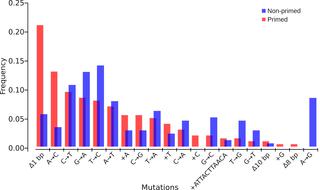PLOS Genetics ( IF 4.0 ) Pub Date : 2020-03-12 , DOI: 10.1371/journal.pgen.1008649 Alexandro Rodríguez-Rojas 1 , Joshua Jay Kim 1 , Paul R Johnston 1, 2, 3 , Olga Makarova 1 , Murat Eravci 4 , Christoph Weise 4 , Regine Hengge 5 , Jens Rolff 1

|
Unicellular organisms have the prevalent challenge to survive under oxidative stress of reactive oxygen species (ROS) such as hydrogen peroxide (H2O2). ROS are present as by-products of photosynthesis and aerobic respiration. These reactive species are even employed by multicellular organisms as potent weapons against microbes. Although bacterial defences against lethal and sub-lethal oxidative stress have been studied in model bacteria, the role of fluctuating H2O2 concentrations remains unexplored. It is known that sub-lethal exposure of Escherichia coli to H2O2 results in enhanced survival upon subsequent exposure. Here we investigate the priming response to H2O2 at physiological concentrations. The basis and the duration of the response (memory) were also determined by time-lapse quantitative proteomics. We found that a low level of H2O2 induced several scavenging enzymes showing a long half-life, subsequently protecting cells from future exposure. We then asked if the phenotypic resistance against H2O2 alters the evolution of resistance against oxygen stress. Experimental evolution of H2O2 resistance revealed faster evolution and higher levels of resistance in primed cells. Several mutations were found to be associated with resistance in evolved populations affecting different loci but, counterintuitively, none of them was directly associated with scavenging systems. Our results have important implications for host colonisation and infections where microbes often encounter reactive oxygen species in gradients.
中文翻译:

非致命性的H2O2暴露可提高细菌存活率和抵抗氧化应激的能力。
单细胞生物具有普遍的挑战,要在诸如过氧化氢(H 2 O 2)的活性氧(ROS)的氧化应激下生存。ROS作为光合作用和有氧呼吸的副产物存在。这些反应性物种甚至被多细胞有机体用作抵抗微生物的有效武器。尽管已经在模型细菌中研究了针对致命性和次致命性氧化应激的细菌防御措施,但仍未探索波动的H 2 O 2浓度的作用。已知大肠杆菌将亚致命暴露于H 2 O 2导致后续暴露时存活率提高。在这里,我们研究了在生理浓度下对H 2 O 2的引发反应。反应的基础和持续时间(记忆)也通过延时定量蛋白质组学来确定。我们发现低水平的H 2 O 2诱导了几种清除酶,这些酶显示出长的半衰期,从而保护了细胞免受将来的暴露。然后,我们询问对H 2 O 2的表型抗性是否改变了对氧胁迫的抗性演变。H 2 O 2的实验演化耐药性揭示了引发细胞中更快的进化和更高水平的耐药性。在影响不同基因座的进化种群中发现了几种突变与抗性相关,但是反直觉地,它们均与清除系统没有直接关系。我们的结果对宿主定植和感染具有重要意义,在这些定居和感染中,微生物经常会遇到梯度活性氧。


















































 京公网安备 11010802027423号
京公网安备 11010802027423号